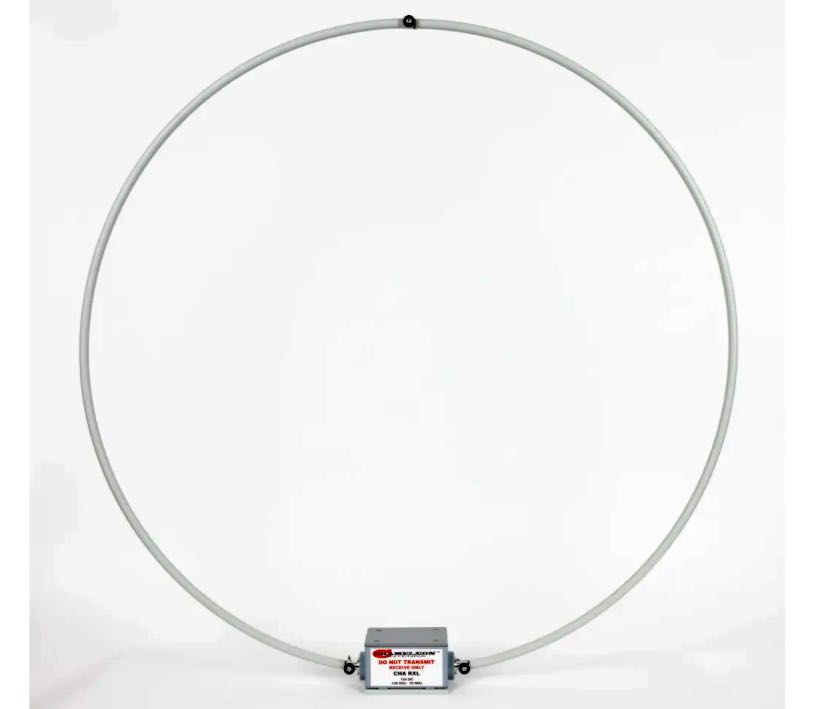 Many thanks to SWLing Post contributor, Don, who notes that Dave Casler has posted a review of the CHA-RXL Pro on his YouTube channel:
Many thanks to SWLing Post contributor, Don, who notes that Dave Casler has posted a review of the CHA-RXL Pro on his YouTube channel:

Many thanks to SWLing Post contributor, Dan Robinson, for the following guest post and review:
by Dan Robinson
Back in 2021 I reviewed the CHA-RXL loop by Chameleon. This loop antenna is sold by major retailers such as DX Engineering, Gigaparts and Chameleon itself – the company is a well-known name in antennas and other equipment for the amateur radio world.
I compared the CHA-RXL to Wellbrook 1530 and W6LVP loops feeding into a four-position Delta antenna switcher, and then to a Raven 16 port multicoupler which maintains good steady gain.
My Wellbrook is mounted on a telescopic mast about 15 feet above ground level, with a rotor. The W6LVP (using LMR400 coax) is tripod-mounted with an overall height from ground of about 12 feet. It has special filters to prevent strong medium wave signals from bleeding into HF.
I have since added a UK-made loop (essentially a copy of a Wellbrook loop but smaller diameter and made of metal) combined with a W6LVP amp. This W6 amp does not have filtering to block strong mediumwave signals. In all, I have four loops into my Delta switcher, which feeds about two dozen receivers.
There is by the way quite robust discussion at https://groups.io/g/loopantennas about various loops, including the Chameleon. And this past July, Steve Ratzlaff posted news about the upgraded loop amp board which will ship with what is now the CHA RXL Pro, saying:
“Chameleon has completely redone their CHA RXL loop amp board from the previous poor-performing loop amp that I tested some time back, and sent me one of the new production boards to test. I’m happy to say it tests very well especially for LF sensitivity, and I can now give it my “seal of approval”. The new board is a version of the LZ1AQ loop amp.”
It turns out, according to an email from Don Sherman of Chameleon, that Steve is one of the engineers who helped design the new amp board for the CHA RXL Pro, and on the Loop Antenna group he provides a folder in which he placed previous test results with “new files of the new board (sweep of the new RXL Pro loop amp, and a picture of the new amp PCB).”
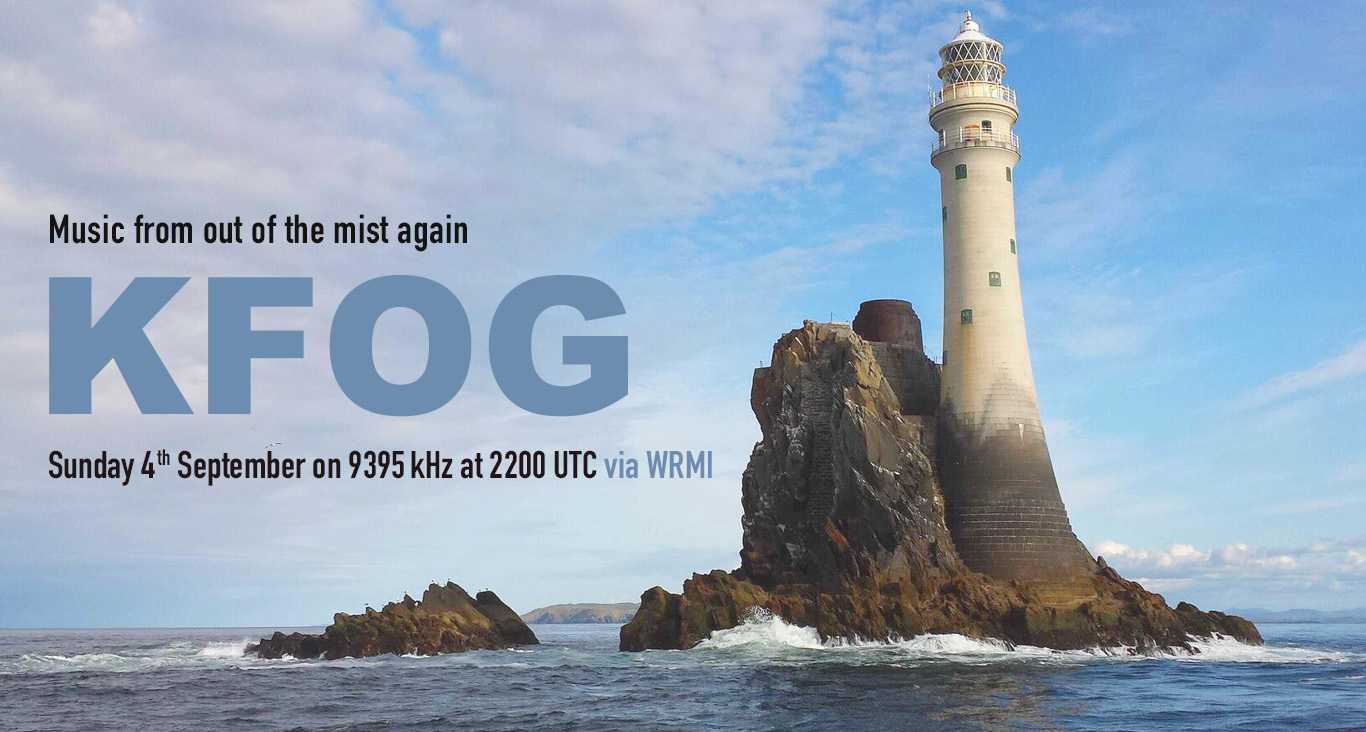 Hi SWLing post community, hope you are all well. This weekend there’s another in the Imaginary Stations series, this time the return of KFOG. The transmission will be on air on 9395 kHz from 2200 utc on Sunday 4th September 2022. Expect tunes in a nautical style. It will feature “music from out of the mist” as they say at KFOG HQ. Fastradioburst23.
Hi SWLing post community, hope you are all well. This weekend there’s another in the Imaginary Stations series, this time the return of KFOG. The transmission will be on air on 9395 kHz from 2200 utc on Sunday 4th September 2022. Expect tunes in a nautical style. It will feature “music from out of the mist” as they say at KFOG HQ. Fastradioburst23.
(Source: RNZ via Alokesh Gupta)
From September 1, RNZ Pacific will resume its shortwave analogue service to the Pacific region between the hours of 5 and 9am New Zealand time.
Shortwave radio is radio transmission using shortwave (SW) radio frequencies.
RNZ Pacific broadcasts in digital and analogue shortwave to radio stations and individual listeners in the Pacific – the digital service is available via satellite and the analogue shortwave can be accessed by anyone with shortwave radio.
The AM service during the breakfast period was stopped in 2016.
The resumption of the analogue service will allow listeners in remote locations with a domestic shortwave radio to hear RNZ Pacific 24 hours a day, made possible with extra funding from the New Zealand government.
RNZ Pacific will run three different frequencies at various times, at 5am NZT tune in on 7425 kilohertz, at 6am NZT listen on 9700 kilohertz, and at 8am NZT change the dial to 11725.
For our full schedule of shortwave frequencies check out the RNZ Pacific website.
The DRM digital service during breakfast hours will continue on transmitter two for our partner stations around the Pacific region.
RNZ Pacific’s flagship daily current affairs programme Pacific Waves is widely listened to across the region and is also broadcast by the BBC Pacific Service.
Many thanks to SWLing Post contributor, Jerome van der Linden, who shares the following guest post:
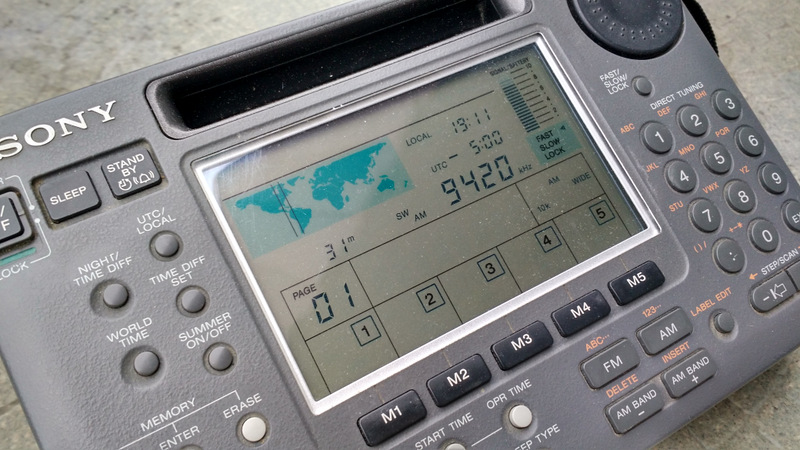 Nothing is so constant as change
Nothing is so constant as changeby Jerome van der Linden
Those of us who have had an interest in broadcasting over many years realize pretty soon that technology is constantly changing. The following relates to the situation where I live in Australia, but I suspect similar things are occurring in other parts of the world, and serve as a constant reminder that we live in a world of change.
When we were in our teens, we had radios that would tune AM and one or more shortwave bands. Hence many of us first heard interstate medium wave stations, and realised that signals there travelled further during darkness hours. Then we switched to SW1 or SW2 and often heard nothing. But persistence paid off and soon we were listening to stations that were in other countries! And when we connected a long wire to the antenna terminal signals improved dramatically. Wasn’t that amazing?
Somewhere in the 70s (I think) our TV stations brought in colour and that too was an amazing change to experience.
Then – somewhat belatedly for us in Australia – FM radio came along and gee the quality of the audio was outstanding! Even my late father was surprised by the clarity with which he could now listen to classical music on our nationwide dedicated ABC Classic FM station. FM also brought with it the introduction of “Community Radio” stations and in more recent years many other types of broadcasters.
Satellite TV came to us in the form of Foxtel: carrying so many different channels it was bewildering. When I realized that the events of 9-11 were telecast live on BBC World (and others), I too decided we should have Foxtel, as I have always been a “news nerd”.
By the late 1990s – having seen a hey day in probably the 60s and 70s – shortwave listening was rapidly becoming a thing of the past, and only hobbyists listened to SW: I remember being asked by another passenger when I was on a South Pacific cruise, what was that I was listening with out on deck? Was it some kind of computer? No, it was just a Sony SW55, and I was listening to Radio Australia.
Then, probably 5 years ago in Australia DAB+ radio was introduced, and whereas we previously had a choice of perhaps 10 to 15 AM & FM radio stations to tune to, suddenly we had a choice of these same stations on DAB radio (in major cities only), PLUS another 10 or 15! We have a phenomenal choice of what to listen to. From a technical view it was amazing to think that all the signals were coming from only one or two transmitters. For those of us with some technical interest it was for a while inconceivable that each station would not have its own transmitter.
Meanwhile, our TV systems have also become digitized in the last couple of years. Not just do we have perhaps three different channels for each commercial network, so 3 commercial networks are now providing probably 9 different programs. On top of that the Government broadcasters (ABC & SBS) have provided not just at least 3 TV channels each, but each of their numerous radio services is now also available on every TV set (eg BBC World Service is available 24/7).
About the same time, with higher internet speeds (ie better data transfers) being available, TV services and radio services are increasingly being streamed into our homes and to our mobile devices, with radio Apps promising they’re “free”, when in fact they do incur a data transfer impact/cost in whatever Internet plan one may have available. Many of the older generation probably don’t even realize what streaming video or sound means, but I think the younger generation is catching on.
Now, to my horror, my favourite DAB music station (“Buddha”) has been making announcements on air saying that the DAB service will be terminated from September 1st, and if I want to continue listening, I must tune in using that Company’s own “LiSTNR” app! Does this mean that listening to what comes over the ether will be a thing of the past? Will we be obliged to pay $x per annum to use a company’s streaming app just to be able to listen to their programs? Whatever is the world coming to?
Our country is, I suspect, very well catered for in terms of media services, and I wonder if we’ve done that too well. I also fear though, that those of us trying to push for reintroduction of shortwave services for remote Northern Territory areas (where streaming apps are a non sense), and for Australia to again broadcast into Pacific territories, may be fighting an uphill battle.
(from Bill Tilford)
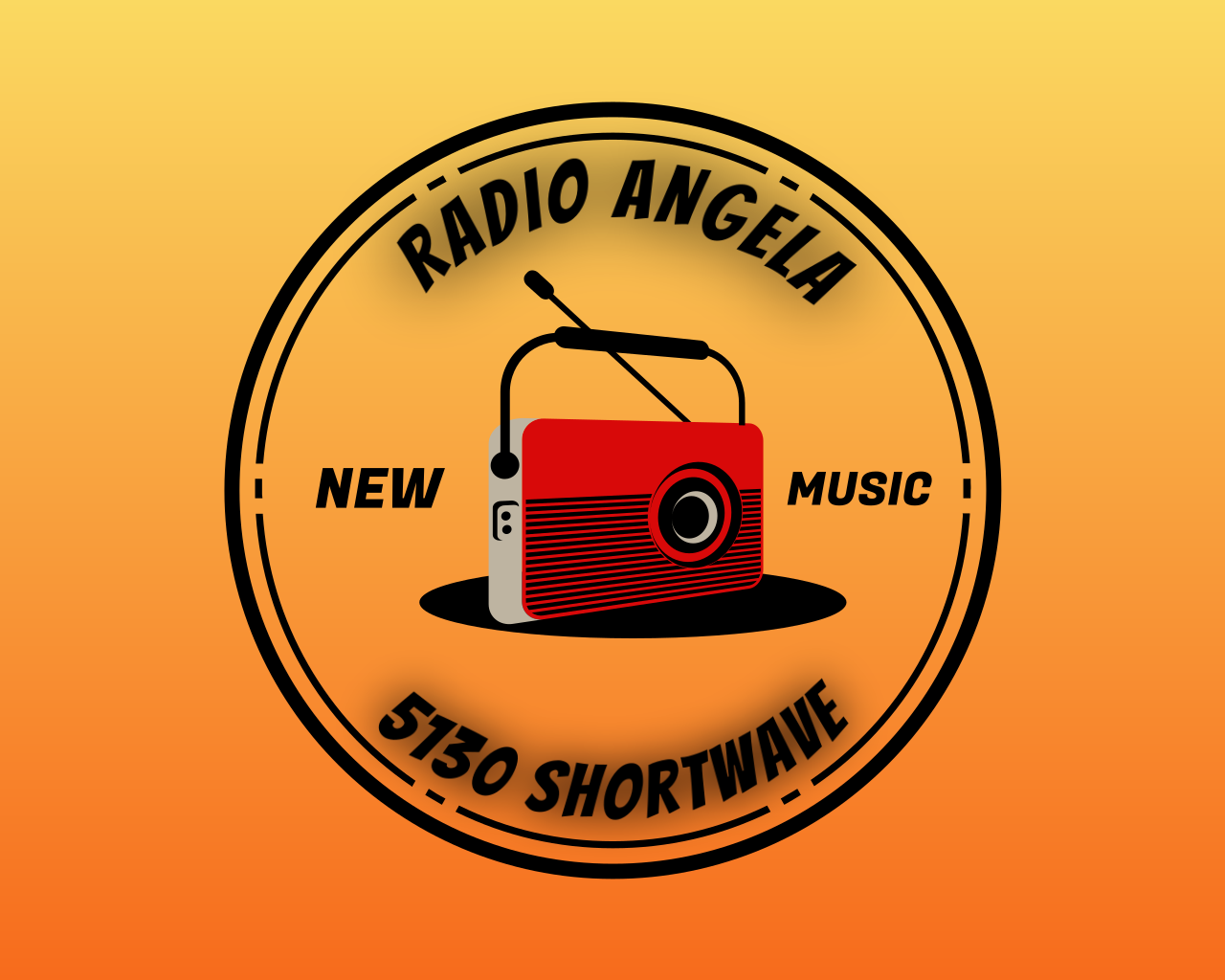
The following is the Radio Angela (WBCQ 5130 kHz) schedule for September 2022. Radio Angela welcomes Austin Saturday Night, a new monthly program by Terry Colgan, who also produces Texas Radio Shortwave on other frequencies/stations, and Venerable Verses with Lainie Petersen on Sunday nights. That program begins with a serialized reading of The Rubaiyat of Omar Khayyam.
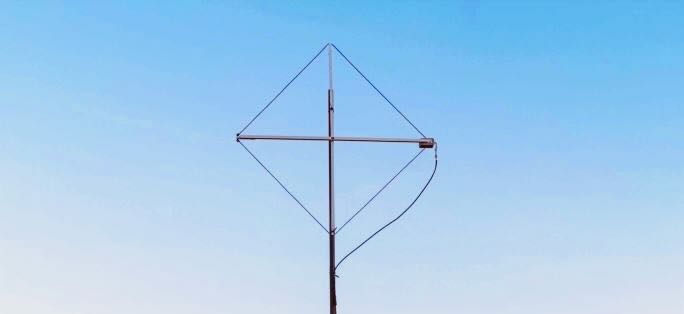 Many thanks to SWLing Post contributor extraordinaire, 13dka, who brings us Part Two of a three part series about the new SULA homebrew antenna project. This first article describes this affordable antenna and demonstrates its unique reception properties. The second article focuses on construction notes. This third and final article will essentially be a Q&A about the SULA antenna.
Many thanks to SWLing Post contributor extraordinaire, 13dka, who brings us Part Two of a three part series about the new SULA homebrew antenna project. This first article describes this affordable antenna and demonstrates its unique reception properties. The second article focuses on construction notes. This third and final article will essentially be a Q&A about the SULA antenna.
This wideband unidirectional antenna is an outstanding and innovative development for the portable DXer. I love the fact that it came to fruition via a collaboration between Grayhat and 13dka: two amazing gents and radio ambassadors on our SWLing.net discussion board and here on the SWLing Post. So many thanks to both of them!
Please enjoy and share Part 3:
by 13dka
Q: Where can I ask questions, discuss all aspects of the the SULA or collaborate in its further development?
A: There is a thread dedicated to the SULA in the new SWLing.com message board: https://swling.net/viewtopic.php?t=55
Q: Since the antenna is “lossy”, what’s the point of having a “beam”?
A: The answer is once again “SNR”: First off, remember that the LNA is there to make up for most of the losses. Secondly, this is all about the noise pickup, 20dB less gain/more losses outside the main lobe means also a reduction of atmospheric/cosmic/whatnot QRN and of course everything manmade from all these sides. The wide horizontal lobe is more or less one hemisphere horizontally, but the flat-ish vertical pattern makes that only a slice of it. In other words, there will be less QRN and QRM pickup from the back and the top. The idea is that the SNR will ideally increase more than the preamp’s noise figure will cost and it often sounds like this is what actually happens. Of course it’s also nice that you can turn an unwanted signal down using the more or less pronounced notch in the backside pattern up to 21 MHz – also very helpful for direction finding.
Q: Do I need a rotor?
A: It depends. If you are one of the lucky few still having a low-QRM-environment at home and you want to put it in the backyard, you really may want to be able to turn it remotely. If you’re using it portable you can simply rotate the mast manually. If you have local QRM or can’t mount it very far away from your or other houses, you may want to rotate the back of the antenna towards that source, leave it at that position forever and enjoy what’s coming in on the pretty wide main lobe of the antenna. The horizontal lobe covers more or less half of the horizon, depending on your stations of interest and location you could get away with never turning the antenna at all.
Q: Is it better than the XYZ loop?
A: Hey, that’s exactly what I wanted to ask you! 🙂 Even though the SULA is very similar in appearance and performance to a good SML working in ideal (ground conductivity) conditions, the SULA is a pretty different animal with a different behavior: Regular small loops, besides being bidirectional, can lose quite a bit of their low angle sensitivity over “poor” ground while the SULA is supposed to be retaining its properties better over any type of ground. Also, while many SMLs are tuned for VLF through the lower portion of the shortwave, the SULA complements those with quite uniform (good) properties up to 30 MHz and beyond.
Q: I have an end-fed random wire or dipole strung up from the house to a tree etc. – can the SULA beat that?
A: That’s quite possible. To get low takeoff angles from horizontal wire antennas you need to string them up at least 1/2 wavelength high, that’s 20m/66ft on 40/41m, 10m/33ft on 20m and so on. If you can’t do that, the SULA may be your ticket to listen farther beyond the horizon. Also, wire antennas are often strung up to match space restrictions or avoid QRM vectors and that way you may end up with some directionality in directions you don’t want, or no directionality at all when the wire is too low. Another noteworthy point is the ground: For most horizontal antennas, better ground means a considerable higher takeoff angle so the dipole needs even more height for low angles. The SULA’s takeoff angle benefits a little from the better ground and only gets a little worse over poor ground.
Q: Do I really need an LNA?
A: I hope so? Of course it depends… if you are going to try this antenna in a very noisy environment, the LNA may have little to no benefit. The noise is limiting your “radio horizon” to very loud signals anyway and for those you may not need an LNA, ever. On the other hand, the antenna is very lossy and in a quiet environment where noise is not an issue at all, weak signals may drop below the sensitivity threshold of your receiver without the LNA. The less noise you have, the more you’ll be able to benefit from an LNA. You will also need one when your radio isn’t all that sensitive, similar to the requirements to run a YouLoop. Andrew kept the loop impedance as constant as possible in order to allow any low impedance coax preamp to work behind the Balun. Any LNA with 20dB of gain should do, as per usual, better stuff may bring better results.
Among the sparse offers for decent shortwave LNAs, the NooElec LANA HF seems to be the only decent LNA sold via Amazon. It’s comparatively low-cost and unlike the other offers on Amazon, ready to be powered via Bias-T or even via Micro-USB and therefore happy with 5V. Since I also had the balun from the same company I could simply connect that all with a couple of these cute little SMA plumbing bits and it worked. The downside is its unknown but perceivably low resilience against intermodulation (low 3rd-order intercept point), this is usually not a problem with such a small loop but it can be in the presence of nearby transmitters.
If you do have nearby transmitters and don’t mind sourcing an LNA from Europe, Andrew recently pointed me to preamps from here. They offer a moderately priced preamp with a 2N5109 transistor (based on the W7IUV design) for a high IP3 value and low noise, which is also available in PCB-only and fully assembled versions including a compartment. They also offer Bias-T boxes.
Q: What is special/different about this antenna? There are already very similar designs!
A: It’s supposed to be simpler and more compact/portable, and it seems to deliver more consistent results over the entire coverage range in different usage environments than similar designs. The SULA was designed to be made with things that are particularly easy to obtain, or which were already obtained — many of us SWLs have some of that Nooelec stuff in our drawer anyway, even when (or because) we’re not habitual antenna builders and balun winders. Now making a better balun and buying a better preamp is not hard and could even bring better results but the point is that you don’t have to. In summary, this is not meant to be a miracle antenna, just number of compromises re-arranged to create a particularly uncomplicated, small, unidirectional loop antenna that aims for DX, for apartment dwellers and DX nomads like me.